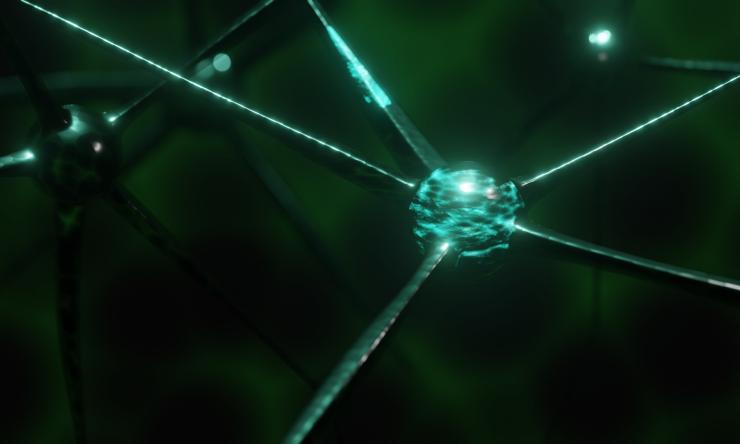Global collaboration: Mapping the whole human brain
Baylor College of Medicine researchers in the Tolias Lab and the Xiaolong Jiang Lab are part of a global collaborative led by the Allen Institute to map the whole human brain. In what is being called the brain equivalent of the Human Genome Project, this initiative will map 200 billion cells in the human brain by their type and function as well as create a primate brain atlas.
The collaboration, funded by a new grant from the National Institutes of Health’s Brain Research Through Advancing Innovative Neurotechnologies® (BRAIN) Initiative, is part of the BRAIN Initiative® Cell Atlas Network, or BICAN.
The project is being led by Dr. Ed Lein, senior investigator at the Allen Institute for Brain Science, a division of the Allen Institute, and Dr. Hongkui Zeng, executive vice president and director of the Allen Institute for Brain Science, along with researchers from 17 other institutions in the U.S., Europe and Japan.
Four additional BICAN grants to the Allen Institute will go to research focused on marrying neuron function with cell type in the regions of the mouse brain that process what animals see, developing a public web-based platform to bring together the data and building a coordination and outreach center for all BICAN-funded research.
Together, the five awards total more than $173 million in funding to the Allen Institute, including portions carried out at collaborating institutions.
Mapping the primate brain
Dr. Andreas Tolias, professor of neuroscience, and Dr. Xiaolong Jiang, assistant professor of neuroscience and an investigator with the Jan and Dan Duncan Neurological Research Institute at Texas Children's Hospital, are leading Baylor’s contribution to the BICAN projects focused on mapping cell types in primates. Using the Patch-seq method Tolias and his lab developed, they will be able to collect large multimodal data including genetic, anatomical and physiological information from single cells.
“To understand how the brain works mechanistically we must understand the basic cell types that make up neuronal circuit and how they are wired together to give rise to function. It is like trying to figure out how a radio works – we have to open it up and look at the different components to see how they are connected and what they do. Patch-seq allows us to measure and relate many features from the same neurons, creating a Rosetta stone of the primate brain. This will help us understand the logic behind the incredible cellular diversity we find in the brain,” Tolias said.
“Basically, these BICAN projects are a fundamental step needed to understand how the brain works, which we hope will also help accelerate understanding the causes of neuropsychiatric diseases,” Jiang added.
At the end of this five-year project Tolias says they will have a basic understanding of the organization of the brain collected into an atlas so any researcher or doctor can access the information. All the techniques and data from these projects will be publicly available.
Atlas for healthcare
When it comes to cognitive diseases and disorders, it is difficult to pinpoint one gene as a cause; they usually involve many genes in complex interactions. In addition, pinpointing the specific cell types harboring causative genes is often difficult. However, there might be a specific cell type to cell type connection that is malfunctioning and giving rise to cognitive problems.
“By having a brain atlas mapping out all cell types and their gene expression, we can understand how the brain is composed, how cell types are eventually connected together and how they function properly, which may allow us to be able to pinpoint the cell type-specific synaptic malfunction for these diseases” Jiang said.
These projects, along with other collaborators’ projects, build off earlier NIH BRAIN Initiative-funded projects to map the cells of the entire mouse brain and parts of the human brain using the full suite of genes switched on in individual cells, a technique known as single-cell transcriptomics. Understanding the cell types in commonly studied mammals like mice and non-human primates is key to improving translational research to ultimately benefit people suffering from brain diseases and disorders.
Other investigators on the BICAN grants include Trygve Bakken, Jennie Close, Song-Lin Ding, Rebecca Hodge, Tim Jarsky, Brian Kalmbach, Michael Kunst, Brian Lee, Brian Long, Jeremy Miller, Kim Smith, Staci Sorensen, Susan Sunkin, Bosiljka Tasic, Jonathan Ting, Jack Waters, and Zizhen Yao of the Allen Institute; Tim Brown, Kimiko Domoto-Reilly, Tom Grabowski, Dirk Keene, and Christine MacDonald of UW Medicine; Bruce Fischl and Eugenio Iglesias of Massachusetts General Hospital; Guoping Feng, Satrajit Ghosh, and Nancy Kanwisher of Massachusetts Institute of Technology; Winrich Freiwald of Rockefeller University; Matt Glasser and David Vvan Essen of Washington University, St. Louis Washington University School of Medicine in St. Louis; Henry Kennedy of INSERM and the Université Claude-Bernard Lyon; Takuya Hayashi of RIKEN; Fenna Krienen of Princeton University; Noah Snyder-Mackler of Arizona State University; Michael Platt of the University of Pennsylvania; Sten Linnarsson and Rickard Sandberg of Karolinska Institutet; Xiaolong Jiang and Andreas Tolias of Baylor College of Medicine; Philipp Berens of the University of Tubingen; Gabor Tamas of the University of Szeged; Christiaan de Kock and Huib Mansvelder of Vrije Universiteit Amsterdam; Boudewijn Lelieveldt of Leiden University Medical Center; David Osumi-Sutherland of EMBL-EBI; Maryann Martone and Anita Bandrowski of the University of California, San Diego; Jerry Chen of Boston University; Paola Arlotta of Harvard University; Tomasz Nowakowski of the University of California, San Francisco; and Sami Farhi of the Broad Institute of MIT and Harvard.
Research reported in this publication is supported by the National Institutes of Health BRAIN Initiative under Award Numbers UM1MH130981, U01MH130907, U01MH130962, U24MH130918, and U24MH130919. The content is solely the responsibility of the authors and does not necessarily represent the official views of the National Institutes of Health.










